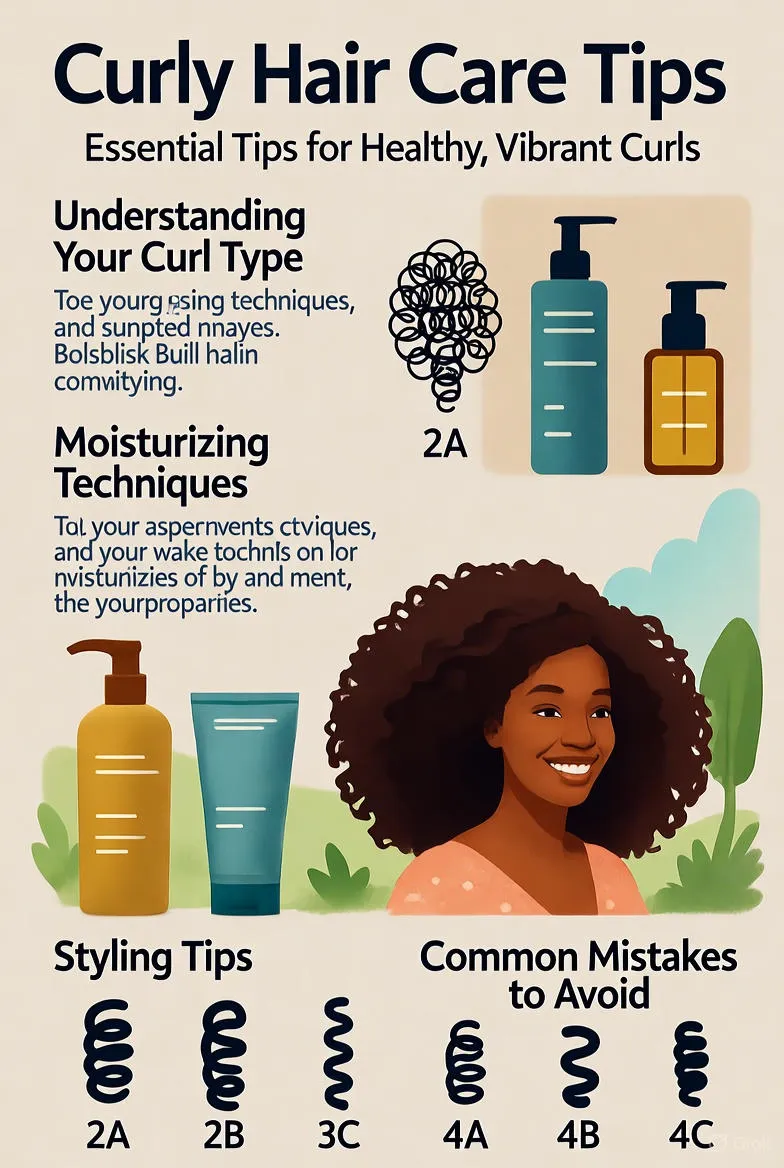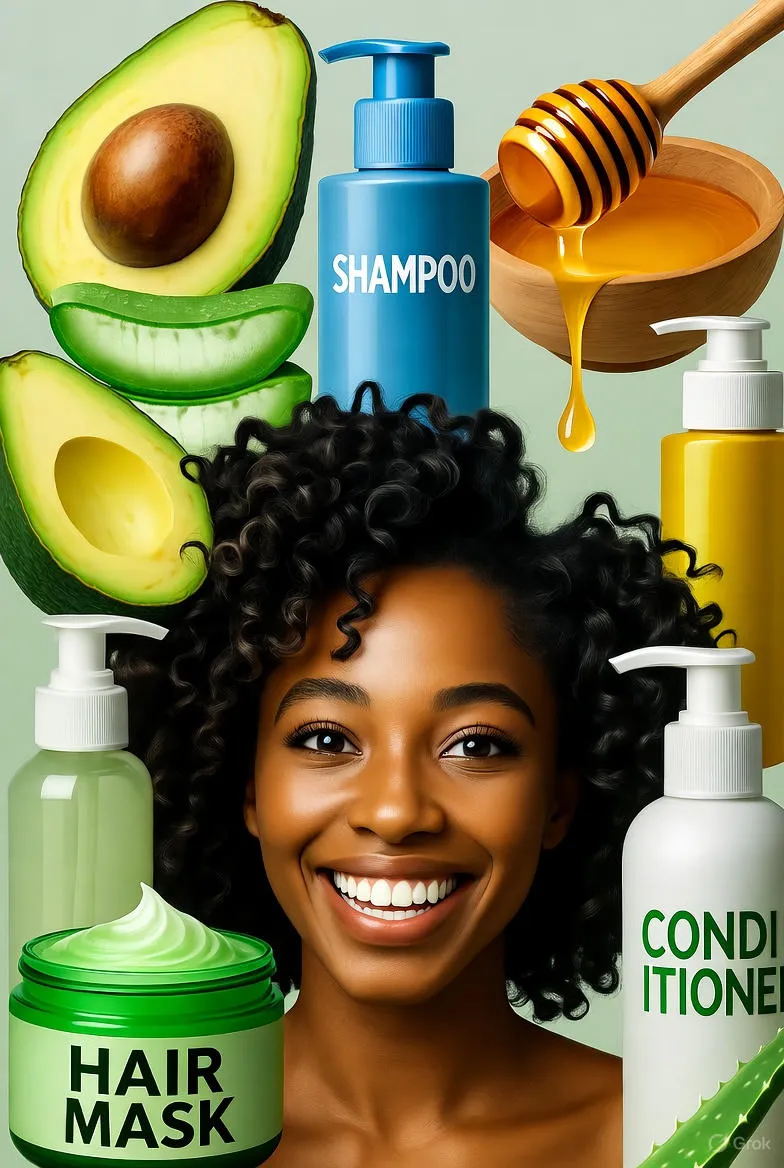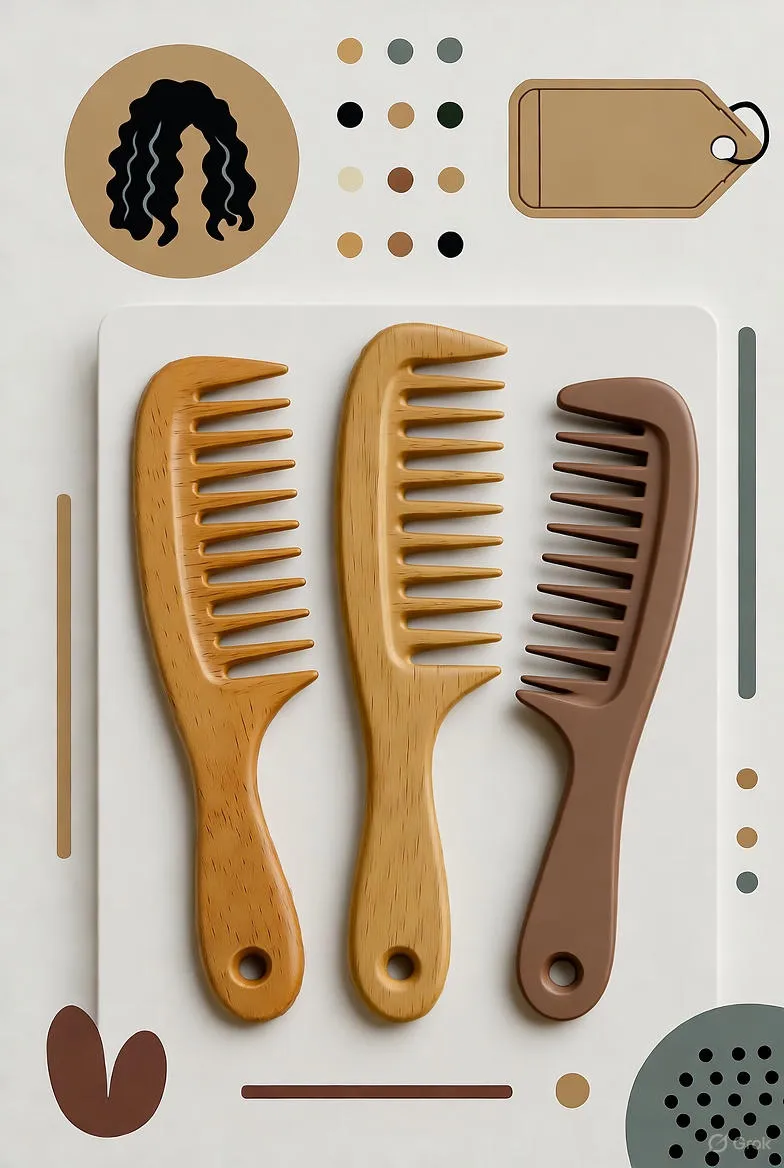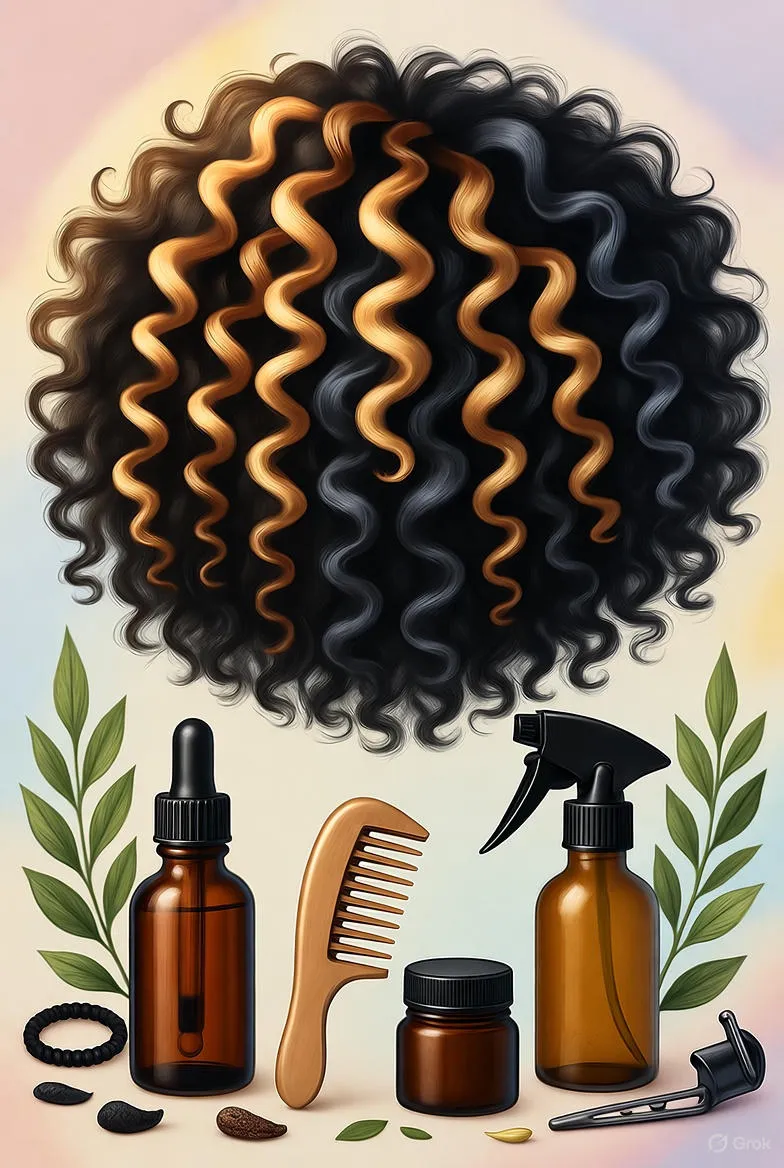Ultimate Guide to Curly Hair Care for Beginners: Embrace Your Curls with Confidence
Discover essential curly hair care tips for beginners. Learn curl types, routines, products, and mistakes to avoid for healthy, defined curls. Start your journey today!

Understanding Your Curly Hair
Curly hair is a beautiful, unique texture that comes in various patterns, from loose waves to tight coils. For beginners, the journey starts with recognizing that curly hair behaves differently from straight hair due to its structure. The hair shaft is elliptical, causing it to curl and often leading to dryness because natural oils from the scalp struggle to travel down the length of the strand.
Embracing your curls means learning to love and care for them properly. This guide will walk you through the essentials, helping you build a routine that enhances your natural texture without overwhelming you. Whether you're transitioning from chemically straightened hair or just discovering your curls, patience and consistency are key.
The Different Curl Types
To tailor your care routine, it's helpful to identify your curl type. The Andre Walker system classifies curls into four main categories:
- Type 2 (Wavy): Loose S-shaped waves that can be fine to coarse. Subtypes include 2A (fine waves), 2B (defined S-shapes), and 2C (more pronounced waves bordering on curls).
- Type 3 (Curly): Defined spirals that spring up when wet. 3A has loose, large curls; 3B features tighter, bouncier curls; and 3C has the tightest curls in this group, almost like small springs.
- Type 4 (Coily): Tight coils or zigzags. 4A is S-patterned coils; 4B has less defined, tighter zigzags; and 4C is the most coiled, with little to no length definition when stretched.
Determining your type can be done by observing your hair's behavior after washing or using online curl typing quizzes. Remember, your hair might have multiple types in different sections, so focus on what works best for the majority.
Building a Basic Curly Hair Routine
A solid routine revolves around the Curly Girl Method (CGM), popularized by Lorraine Massey. This approach avoids sulfates, silicones, and heat tools to preserve moisture and curl integrity. Here's how to get started.
Step 1: Cleansing – Wash Less, Love More
Curly hair doesn't need daily washing; aim for 2-3 times a week to prevent stripping natural oils. Use a sulfate-free shampoo or co-wash (conditioner-only wash) for gentle cleansing.
- Wet your hair thoroughly with warm water to open the cuticles.
- Apply a small amount of cleanser to your scalp and massage gently with fingertips.
- Rinse well, avoiding the lengths to retain moisture.
For co-washing, choose a cleansing conditioner that removes buildup without drying out your strands. This method is ideal for finer curls or during low-porosity phases.
Step 2: Conditioning – Hydration is Queen
Conditioner is your best friend. After cleansing, apply a generous amount from mid-lengths to ends, detangling with a wide-tooth comb or fingers. Leave it in for 3-5 minutes, or longer as a deep treatment.
Look for ingredients like shea butter, coconut oil, or aloe vera for moisture. Rinse with cool water to seal the cuticles, locking in hydration and enhancing shine.
Step 3: Detangling – Gentle Hands Only
Detangle while hair is wet and conditioned to minimize breakage. Start from the ends and work up to the roots. Use your fingers for precision or a seamless comb for stubborn knots. Never brush dry curls – it leads to frizz and damage.
Styling Your Curls: Simple Techniques for Everyday
Styling doesn't have to be complicated. Focus on techniques that define curls and reduce frizz.
The Pineapple Method for Overnight Protection
To preserve your style overnight, gather your hair into a loose, high ponytail on top of your head – like a pineapple. Secure with a scrunchie and add a silk bonnet or scarf. This method maintains volume and reduces flattening.
Diffusing for Defined Curls
If using a blow dryer, attach a diffuser and set it to low heat. Scrunch upward while diffusing to encourage curl formation. Air drying is even better for health, so plop your hair in a microfiber towel or old T-shirt for 20-30 minutes to absorb excess water without friction.
Refresh Day Styling
On non-wash days, mist with water or a leave-in conditioner spray. Scrunch in a curl refresher or gel for hold. The "praying hands" method – smoothing product between palms before applying – ensures even distribution.
Essential Products for Curly Hair Beginners
Start with a minimal kit to avoid overwhelming your hair or wallet. Prioritize multi-taskers.
- Shampoo: Sulfate-free, like DevaCurl Low-Poo.
- Conditioner: Moisturizing, such as SheaMoisture Manuka Honey.
- Leave-In: Lightweight hydrator, e.g., Cantu Shea Butter Leave-In.
- Styling Gel/Cream: For hold without crunch, try Eco Styler or Aunt Jackie's Curl La La.
- Oil: Argan or jojoba for sealing ends.
Read labels: Avoid silicones (ending in -cone) if following CGM strictly, as they can build up on curly hair.
Common Mistakes and How to Avoid Them
Beginners often fall into traps that hinder progress. Here's how to sidestep them.
Over-Washing and Heat Styling
As mentioned, frequent washing dries out curls. Similarly, flat irons and curling wands weaken the hair shaft over time. Limit heat to once a month, always using a protectant.
Using the Wrong Tools
Cotton towels cause friction and frizz; switch to microfiber or flour sack cloths. Harsh brushes tangle and break – opt for detangling brushes designed for curls.
Ignoring Scalp Health
A healthy scalp supports strong roots. Massage with oils like tea tree for dandruff or peppermint for stimulation. Exfoliate weekly with a gentle scrub to remove buildup.
Nutrition and Lifestyle Tips for Healthier Curls
Curly hair health starts from within. A balanced diet rich in proteins, omega-3s, and vitamins A, C, and E nourishes follicles.
- Proteins: Eggs, nuts, and fish for keratin building blocks.
- Hydration: Drink plenty of water; curls are prone to dehydration.
- Stress Management: High stress can trigger shedding; incorporate yoga or meditation.
- Sleep on Silk: Pillowcases reduce friction and moisture loss overnight.
Consider supplements like biotin if deficient, but consult a doctor first. External care pairs best with internal wellness.
Dealing with Frizz and Shrinkage
Frizz occurs when cuticles lift due to humidity or dryness. Combat it with humectants like glycerin in products and anti-humidity sprays. Shrinkage – curls appearing shorter when dry – is normal and beautiful; embrace it by styling in stretched techniques like twist-outs if you prefer length.
Seasonal Adjustments
In winter, amp up moisture with heavier butters; in summer, lighten up to prevent limpness. Always adapt to your environment.
Advanced Tips for Long-Term Success
Once basics are down, experiment safely. Try protective styles like braids or buns for low-manipulation days. Trim every 3 months to remove split ends, seeking a curl specialist if possible.
Track your routine in a journal: Note products, techniques, and how your hair responds. Join online communities like Reddit's r/curlyhair for support and inspiration.
Embracing Your Unique Curl Journey
Curly hair care is a personal evolution. What works for one may not for another, so tweak as needed. Celebrate small wins – a good hair day boosts confidence immensely. Remember, your curls are part of what makes you uniquely you. With time, you'll master a routine that lets them thrive.
This guide equips you with foundational knowledge, but the real magic happens through practice. Start simple, stay consistent, and watch your curls flourish.


